Have you ever wondered how many bacteria on your hands?
What type of bacteria are they?
How can I teach my kids to wash their hands after playing outside?
Now, we can show them in a scientific way.
Bacteria are everywhere. They live in the ocean, soil, and in the gut of the animals.
If you want to learn the basics of bacteria, check our previous post – Observing bacteria under the microscope.
This article covers
The importance of bacteria in human health
Although our first impression of bacteria is bad because of the disease-causing bacteria, we actually benefit from tons of bacteria and microbes residing in our body (refer to human microbiome).
These microbes help us to digest non-digestible food such as dietary fibers and provide us essential energy and nutrients. They modulate our metabolism (lipid, xenobiotic and drug), impact immune function, maintain the integrity of the gut and protect against other pathogens. They are very important to human health; thus, it is often referred to as the hidden organ.
A good example is probiotics.
Probiotics are live microbes that have benefit to human health (maintain good gut flora) after consuming. For example, yogurts and fermented dairy products.
In fact, the number of bacteria in the human gastrointestinal tract is estimated at 1013-1014, which is around equal numbers to the human cells. Is it amazing?
How about the number of genes?
The number of genes of all the microbes (include bacteria, viruses, and fungi) in the human body is around 9 million genes, as opposed to the number of human genes 23,000. Is it fascinating?
Human microbiome
The human microbiome refers to all the microbes that reside on the surface of the human body and within the tissues. These microbes include bacteria, archaea, fungi, viruses, and protists. Interestingly, different organs and different parts of the human body are colonized by different types of microbes.
In this tutorial, let’s look at the microbes on our hands, refers to hand skin microbiome.
Most of the bacteria in our gut are not easy to culture. They are often identified and quantified by sequencing their 16s rRNA in research labs.
For the simplicity and feasibility to do it at home, I use the culture method to see some bacteria on our hand. Keep in mind, the bacteria we saw by culture method are just a very little pool of the skin microbiome.
Step-by-step to see your hand skin microbiome
- Preparing nutrient plates (often LB plate) that are suitable for bacteria growth.
It is a complicated process to make LB agar plates because it involved sterilizing the media. I would recommend buying premade plates that are ready to use when you start out.
Also, check out this video.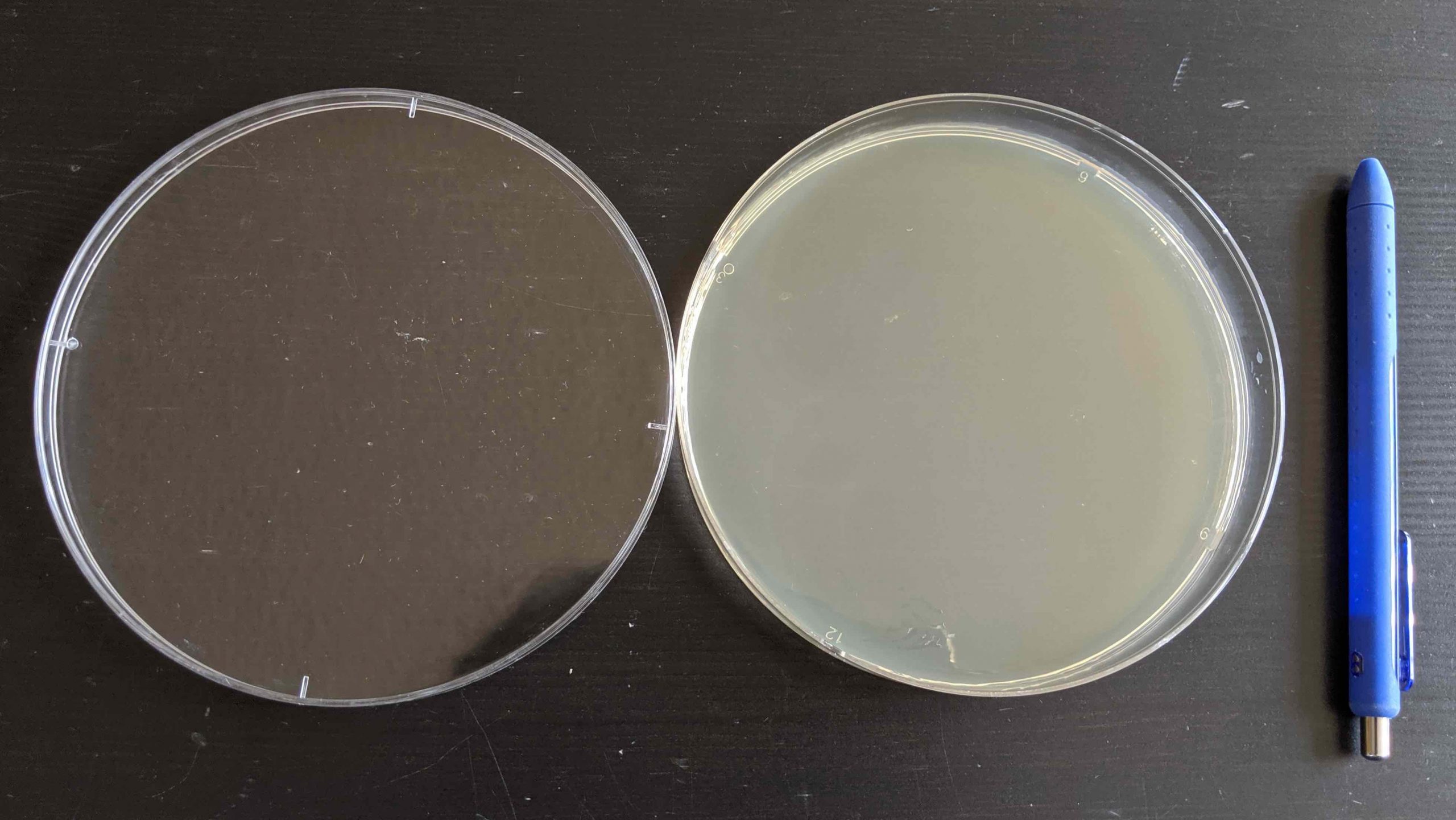
- Make your handprint.
Make sure that there is no extra water flowing on the surface of the plate. Put your hand down on the agar plate, be careful, not to squeeze the agar too much to break it.

- Incubate the LB plate.
Close the lid. Put the plate upside-down on the top of the refrigerator or the area where is warm around 30-37 degree celsius.
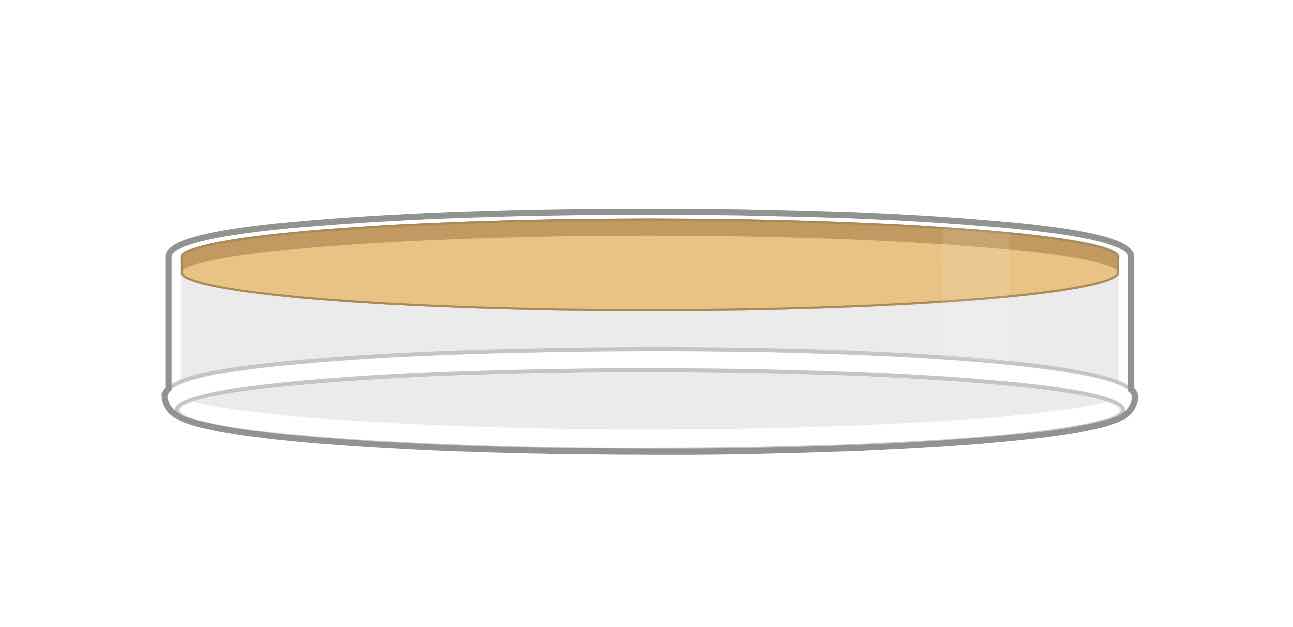
- Check if any bacteria colony appears.
Look at the plate everyday until you see bacteria colonies. It took me about 3 days to see the colonies below.
P.S. I used a customized big agar plate (18 cm in diameter) that is larger than the usual plates (10 cm in diameter). The large plate can accommodate my hand. So far, I didn’t find these big plates on any online store. If you are interested in buying these plates, please contact us.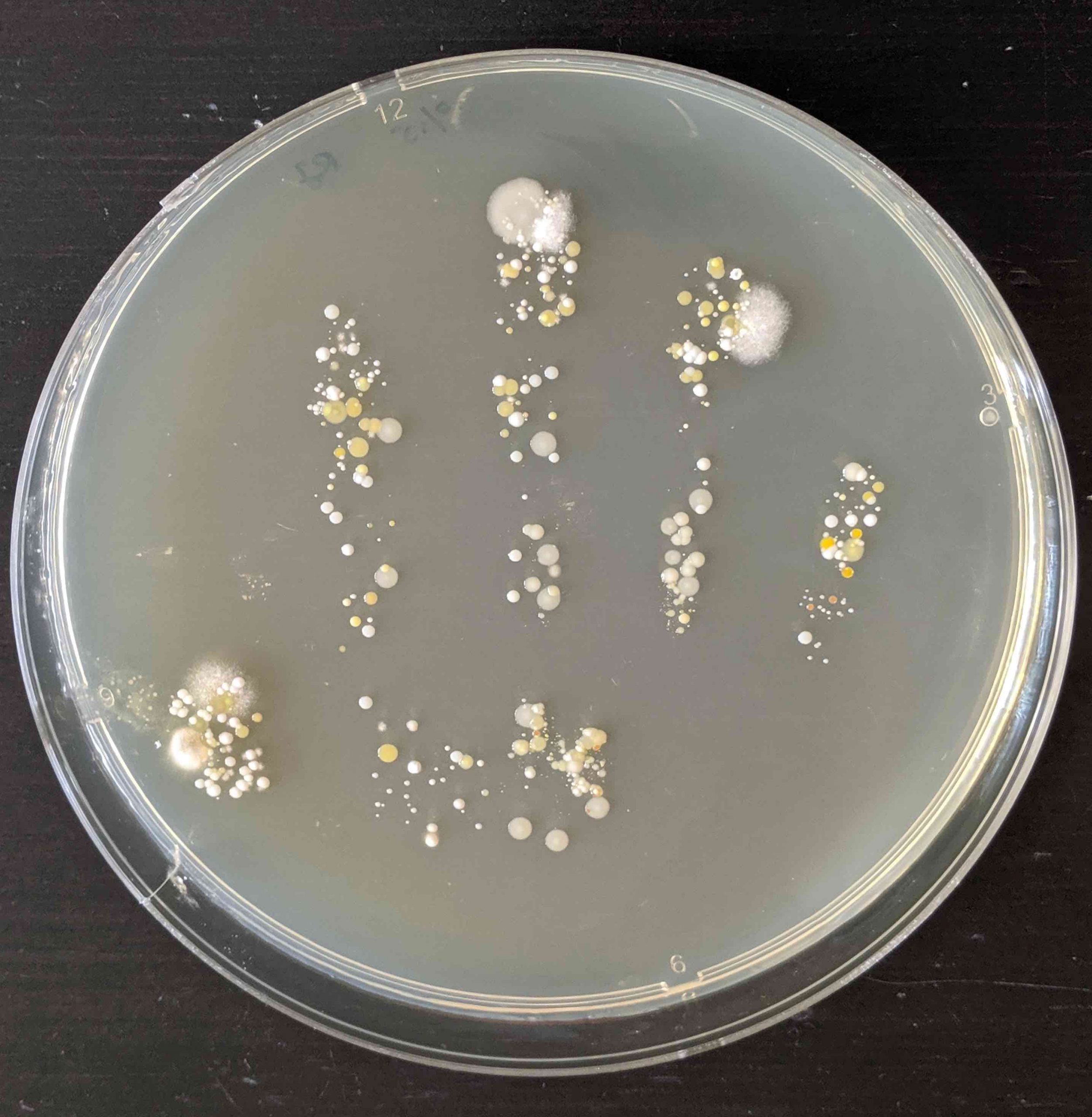
- Count the number of colonies.
Generally speaking, each colony was grown from a single bacterium. Therefore, the number of colonies represents the number of bacteria initially on your hand.
- Count how many types of the colonies are there.
Different types of bacteria produce different-looking colonies, some colonies are bright yellow, some colonies are circular in shape, and others are irregular. We can identify them based on these characters, which I will discuss below.
Observing bacteria colonies in a Petri dish
We should examine the bacteria colonies in the closed petri dish for safety. Colony morphology is a method that scientists use to describe the characteristics of an individual colony of bacteria growing on agar in a Petri dish. It is useful for bacteria identification.
Bacteria colonies differ in their shape, size, color and margin.
Below are the terminology used to describe common colony types.
Form/shape
What is the basic shape of the colony? Circular, filamentous or punctiform (groups of tiny colonies), etc.
Size
The diameter of the colony can be measured. Are they big, medium or small?
Surface
How does the surface of the colony look? Bacteria colonies are often shiny and smooth. For example, smooth, glistening, rough, wrinkled or dull.
Color
What is the color of the colony? White, yellow and orange, etc.
Opacity
For example, transparent (clear), opaque, translucent (semi-transparent, highly reflective), etc.
Elevation
This describes the side view of a colony. Turn the Petri dish on the side. Are they flat, raise, convex or umbonate (having a knobby protuberance)?
Margin/border
This describes the edge of a colony. What is the magnified shape of the edge of the colony? Even, wavy or filiform
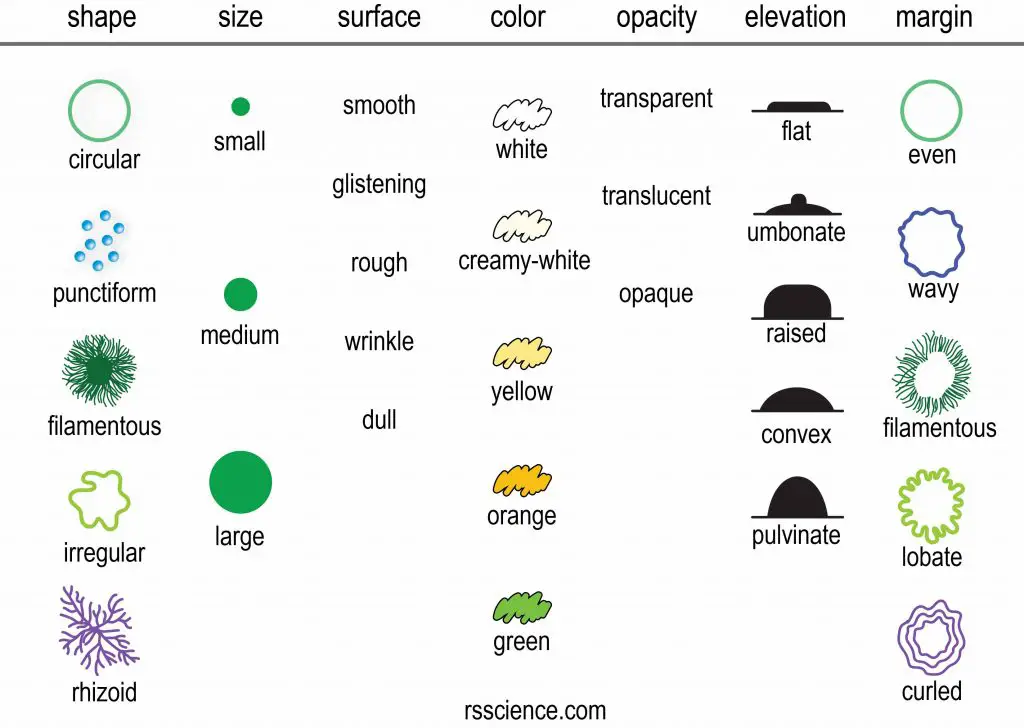
[In this figure] The characteristics to describe the morphology of bacteria colonies.
My bacteria handprint on the large LB plate
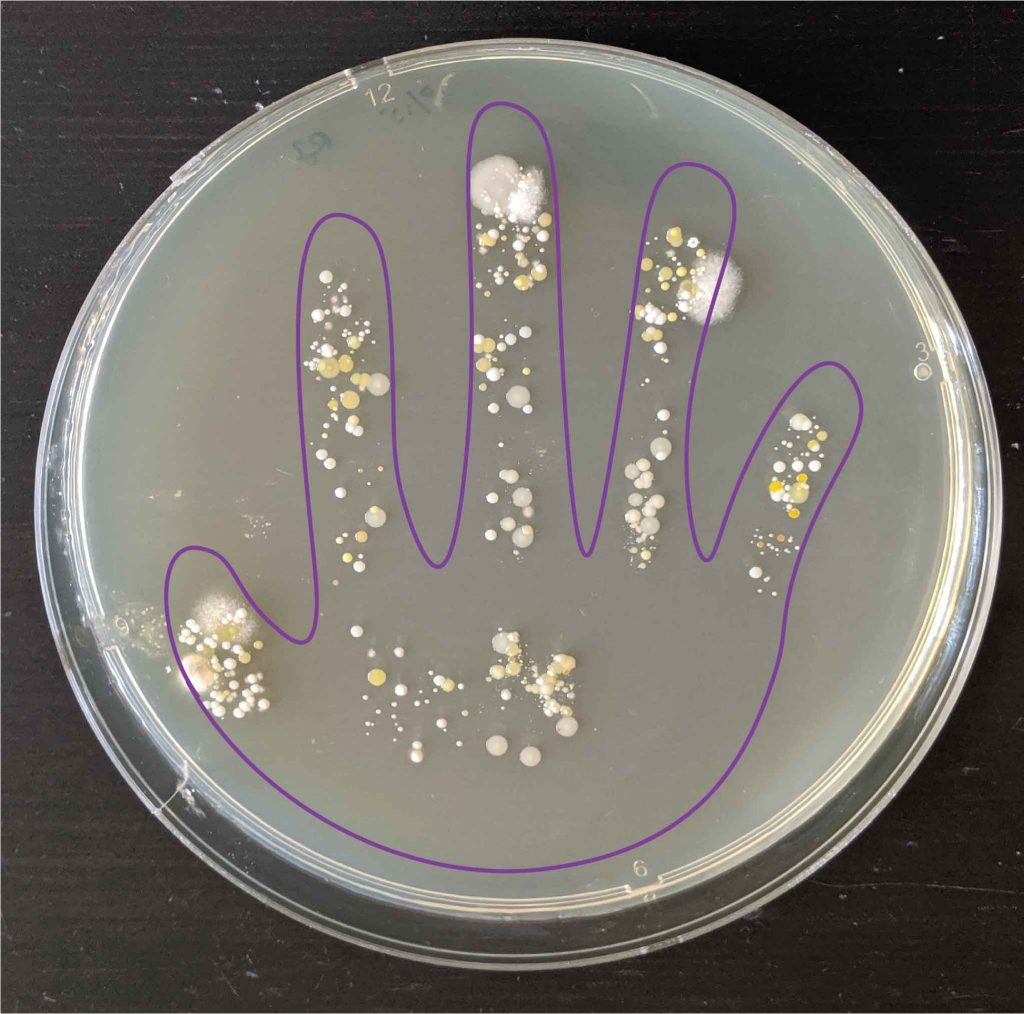
[In this figure] My bacteria handprint.
There are many different types of bacteria colonies from my hand, and you can also see the outline of my hand shape.
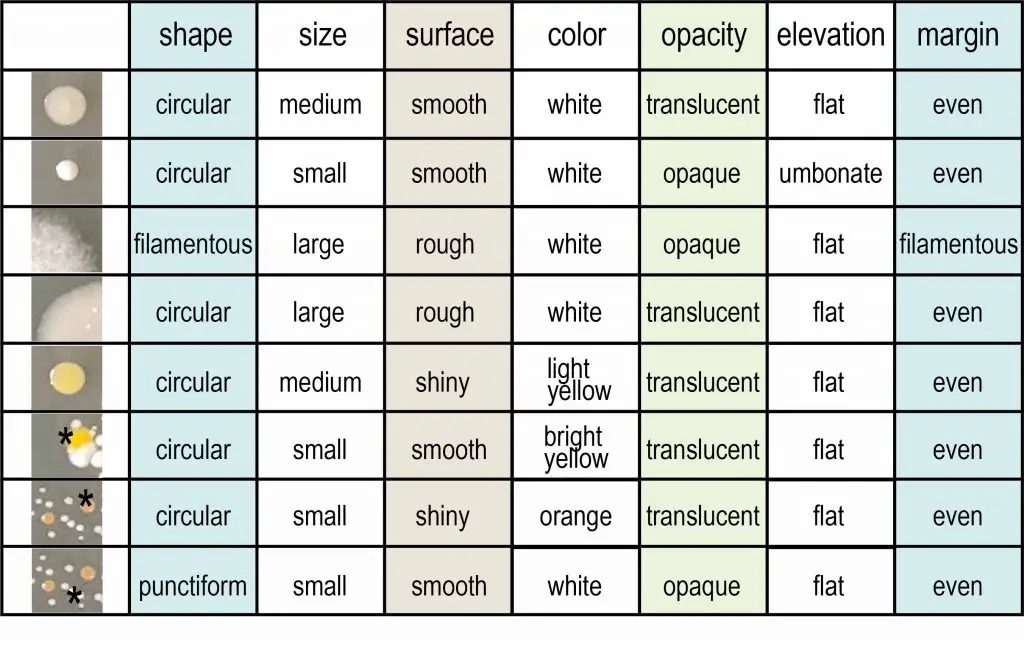
[In this figure] Characterization of my bacteria handprint.
The bacteria colonies differ in their shape, size, surface, color, and opacity. There is terminology to describe each characteristics. In this case, there are around 8 different types of bacteria on my hand.
If you wondering what the individual bacterium looks like, you can pick some bacteria from part of the colony, and perform a simple stain, like methylene blue or a differential stain like Gram stain. We have a detailed guide for Gram stain.
Microbiome differs with ages
Have you ever wondered if everyone has the same type of bacteria on their hands?
Research showed that bacteria composition changes with age.
Let me show you my one-year-old son’s bacteria handprint.

This is my 1yr old son. After using his hand eating, I made a handprint using his hand 🙂
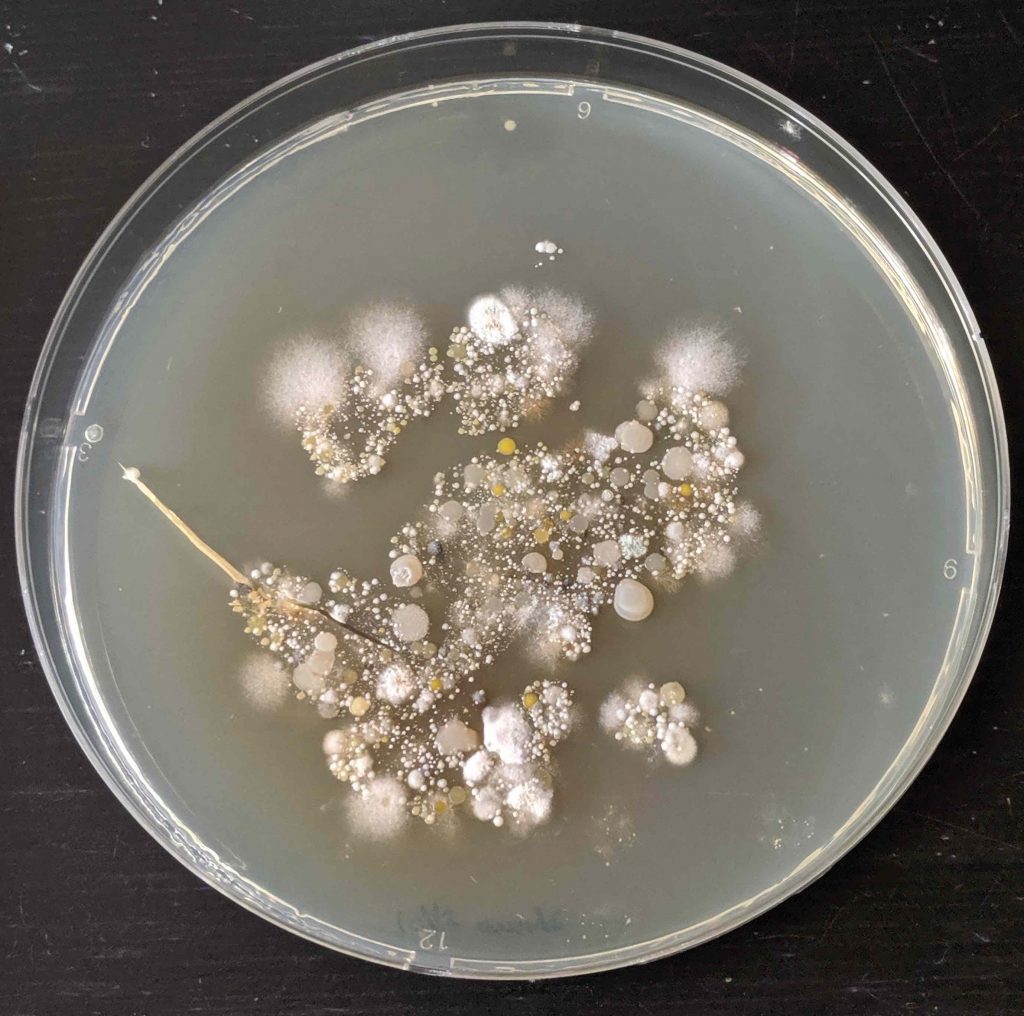
[In this figure] Bacteria handprint from my 1-year-old son.
How different the bacteria are! There are also some fungi.
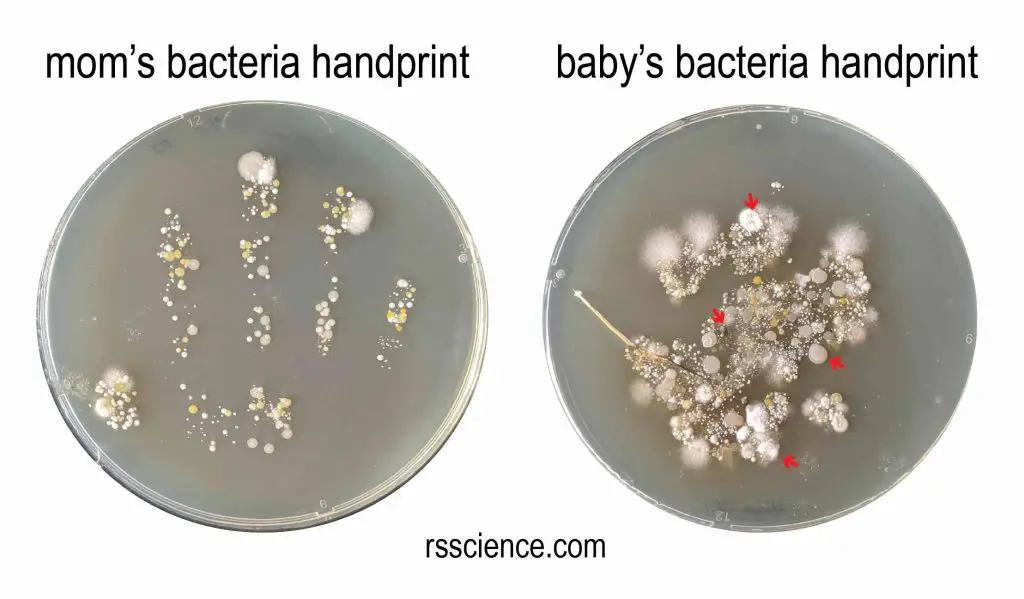
[In this figure] Difference in mom’s and baby’s bacteria handprint.
The red arrowhead indicated that the type of bacteria is only present on the baby’s hand.
Conclusion
Bacteria can be good and bad for human health. Although some bacteria can not be cultured in the regular setting (LB agar plate with 5% oxygen), we can still see some bacteria from our hands using a simple culture method.
You can also make bacteria handprints before hand-washing and after hand-washing. This can also teach your children the importance of hand-washing.

